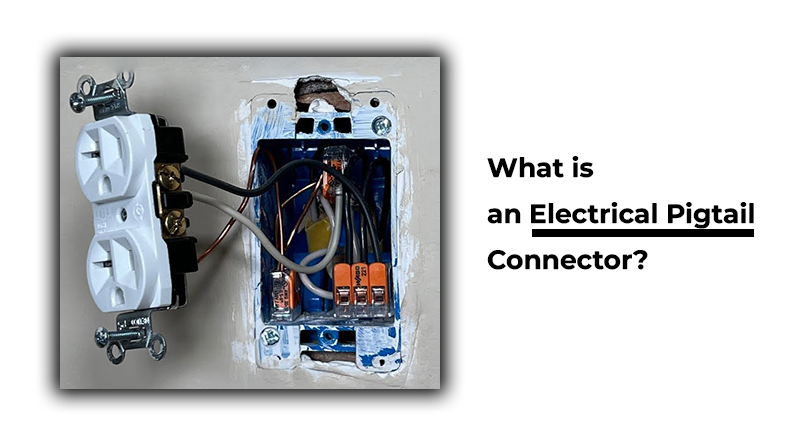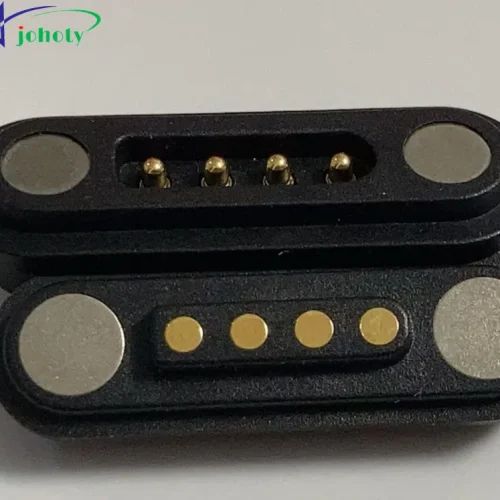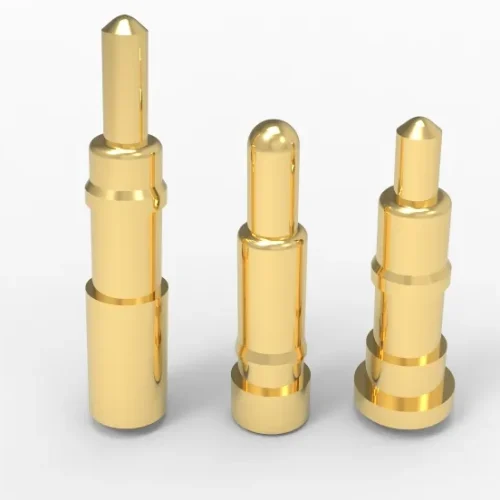Do you need help handling wires when replacing a socket or switch? A pigtail is an essential part of any electrical project, whether upgrading the lighting in your office, adding a new switch to your kitchen, or changing the wiring in your home.
This article will discuss what an electrical pigtail is, the tools and materials you need, and the step-by-step process to create one. So, let’s dive in!

What is an Electrical Pigtail Connector?
Suppose you want to add electrical pigtail lights in your home office but need a socket nearby. This is where an electrical pigtail comes into play.
An electrical pigtail is a short length of wire used to connect two or more wires. It is commonly used in electrical projects such as replacing switches.
In simple terms, an electrical pigtail is like an extension cord for your home’s electrical system.
In fact, It acts as a bridge between your existing electrical system and the new device you want to power.
Moreover, it allows you to add extra nozzles or switches without having to rewire your entire setup. The pigtail creates a reliable and secure connection and ensures electricity flows without danger.
Tools and Materials You Need
You will need a few basic tools and materials to make an electrical pigtail. Here’s a list of what you’ll need:
- Wire cutters
- Wire stripper
- Pigtail wire nuts
- Needle-nose Pliers
- Screw Driver
- Electrical tape
- Wire Connectors
You can easily find these items at your local hardware stores. With these tools and materials, you can successfully make an electrical pigtail.
How Can You Make an Electrical Pigtail?
Now that you have all the necessary tools and materials, you can start making an electrical pigtail. However, safety should always be your top priority when working with electricity. Here’s a step-by-step guide to guide you through the process:
1- Cut Off the Power Supply
Cut off the power supply to your working area before working on any electrical work( installation or repair). This step is crucial for your safety. You can locate the fuse box or circuit breaker for turning off the power.
Further, you can use a non-contact circuit tester to determine if the electrical power is off. This tool allows you to test for power without touching any wires.
2- Unplug The Device
After ensuring the lines are dead, disconnect an existing switch from wires and remove it from the wall if replacing it.
Keep the wires accessible by removing them from the device and sorting them by color. The colors of wires can be red, black, neutral (white), and ground (green or bare copper).
3- Set up the Pigtail Wires.
The next step is to prepare the pigtail wires. A pigtail wire must be at least 6 inches long to comply with the National Electric Code.
Strip about 3/4 inch of the insulation from the end of each wire that you will connect with the help of a wire stripper. This exposes the bare copper wire that you’ll use to make connections.
4- Twisting Wires
Now, take the pigtail wires and twist them together with the wires currently on your wall.
However, make sure that the white (neutral) wire matches the white, the black (hot) wire matches the black, and the green or bare (ground) wire matches the green or bare.
You can twist the wires together clockwise using fingers or wire nuts. This will prevent the wires from coming loose over time and build a secure connection.
5- Installation of New Switch
It is time to install the new switch after the wires have been correctly twisted together. Ensure the wires do not touch metal components while replacing them in the electrical box. Screw the device back in place to secure it.
6- Testing
After installation, you must test the device to ensure it functions properly. Turn the power back on at the circuit breaker to test the new switch installed.
Once satisfied with the result, use pigtail wire nuts to secure wires. You can safely and securely connect the wires by twisting on the wire nuts.
Wrapping Up
Ultimately, making an electrical pigtail is important for safe electrical work. You can build a safe and reliable wire connection by following the steps explained in this article.
Yet, safety is crucial when working with electricity. Always cut the power to the circuit you’re working on, use the right tools and materials, and follow instructions carefully.
Consulting with a professional electrician is a good idea if you need clarification on any part of the process.
However, If you require any information, don’t hesitate to get in touch with our dedicated Johoty team.











